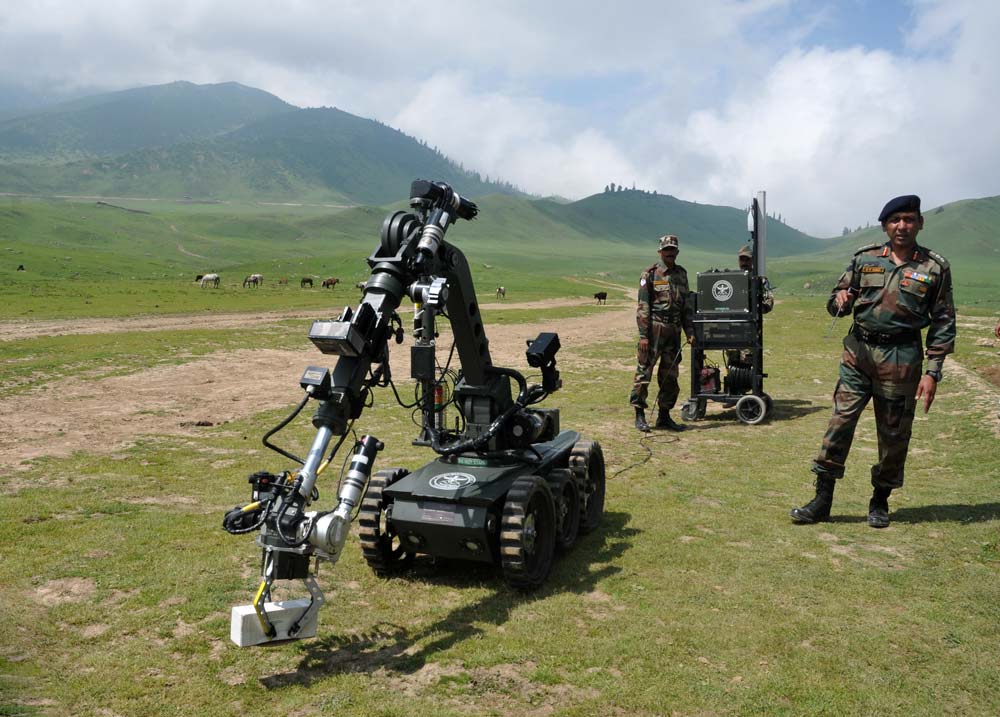Pakistan had miniaturised nuclear weapons so they could be launched by small missiles with a range of around 20 kilometres, Irfan Husain writes in the Dawn

PUNCH in #Uriattack into Twitter and you’ll see dozens of short, frenzied messages. Most of them urge the Indian government to launch a strike against Pakistan.
Armchair and desktop warriors always find it easy to go to war as they aren’t the ones who’ll do the fighting and the dying. Hawks in TV studios on both sides ratchet up the rhetoric as extremists of every stripe, both Hindu and Muslim, cheer from the sidelines.
As a senior member of India’s ruling BJP said in Uri’s aftermath: “For a tooth, the whole jaw.” This kind of hysterical sabre-rattling is hardly what one would expect from a seasoned politician in a tense situation. But then the BJP is not known for its restraint.
Desktop warriors always find it easy to go to war.
Fortunately, Narendra Modi appears to be resisting calls for escalation. But apart from his own aggressive, anti-Pakistan stance, he is caught between competing compulsions: on the one hand, his party faces crucial state elections in Uttar Pradesh next year; on the other, he knows full well the risks inherent in armed conflict.
To do well in UP, Modi has to reach out to his nationalist Hindu base: after Uri, he needs to assure voters that he will be tough with Pakistan. But he has to calibrate his military response very carefully: the slightest misjudgement, and things can spiral quickly out of control.
Some time ago, Pakistan revealed that it had miniaturised nuclear weapons so they could be launched by small missiles with a range of around 20 kilometres. The purpose of these battlefield nukes is to break up an Indian-armoured formation as soon as it crosses the border.
At the time of the announcement, I asked a serving general how he thought these weapons could be used, given the very real possibility of escalation to a nuclear exchange. And even if this did not occur, the nuclear explosions and resultant fallout would render large areas radioactive for years. His reply was revealing: “Actually, the experience from Nagasaki and Hiroshima does not prove this to be the case.”
And should there be a full-fledged exchange of nuclear weapons, cities across the subcontinent would be devastated, with an estimated 20 million dead. Hundreds of millions would suffer from radiation poisoning. No wonder somebody suggested on Twitter that all those advocating war should be shown films from the aftermath of the atom bombing of Nagasaki and Hiroshima.
Despite its horrors, this is a scenario extremists would welcome, for they thrive in chaos and misery. The First World War was triggered by the assassination of Archduke Franz Ferdinand of Austria-Hungary by a Serb nationalist. The assassin could not have known that his act would start a conflict that would cause 17m deaths.

Given how easy it is for demented terrorists to light a fuse to the powder keg that is South Asia today, you would have hoped that the leaders of India and Pakistan would have the maturity and good sense to devise a mechanism to ensure that lines of communications are always open. And while the two armies do talk to each other from time to time, there needs to be in place a firm no- first-use policy governing nuclear weapons.
But as we have seen, Pakistan has developed battlefield nukes specifically for use in a tactical, tank-busting role. This is because of the huge numerical advantage the Indian army enjoys, as well as the proximity of our major communication arteries to the Indian border.
So do we have a stalemate? Sadly, no. Both countries think they are free to launch limited attacks under a ‘nuclear overhang’, calculating that they can go to a certain length before the other side feels sufficiently threatened to go nuclear. This was Musharraf’s thinking when he launched the Kargil war.
Given the poverty that stalks both countries, one would have thought this entire obscene calculus is a certain sign of madness. Why should two of the poorest countries in the world (in per capita terms) be obsessed with building up arsenals of weapons of mass destruction?
An almost equally deadly threat comes from growing Indian demands that Modi should abrogate the Indus Waters Treaty and cut off the water flowing to Pakistan. This would trigger an immediate war as obviously, the country could not survive in such a scenario. Most would think that a quick death is better than a slow, lingering one, and we might as well take as many Indians with us as we can.
Again, not a pleasant thought, but one forced on me by the rising sound of war drums. However, even this BJP government is aware of the dangers of such a move, and will probably not take such an ill-considered step.
Here, it must be said that the Indian media has not covered itself with glory in this crisis. TV channels are vying to see who can be more aggressive and belligerent. It’s time to stand back and de-escalate.
(This article was published by the Dawn, Pakistan on October 1st, 2016.)
Note: Views expressed in this article are those of the author and do not necessarily reflect the official policy or position of the Kashmir Life.














